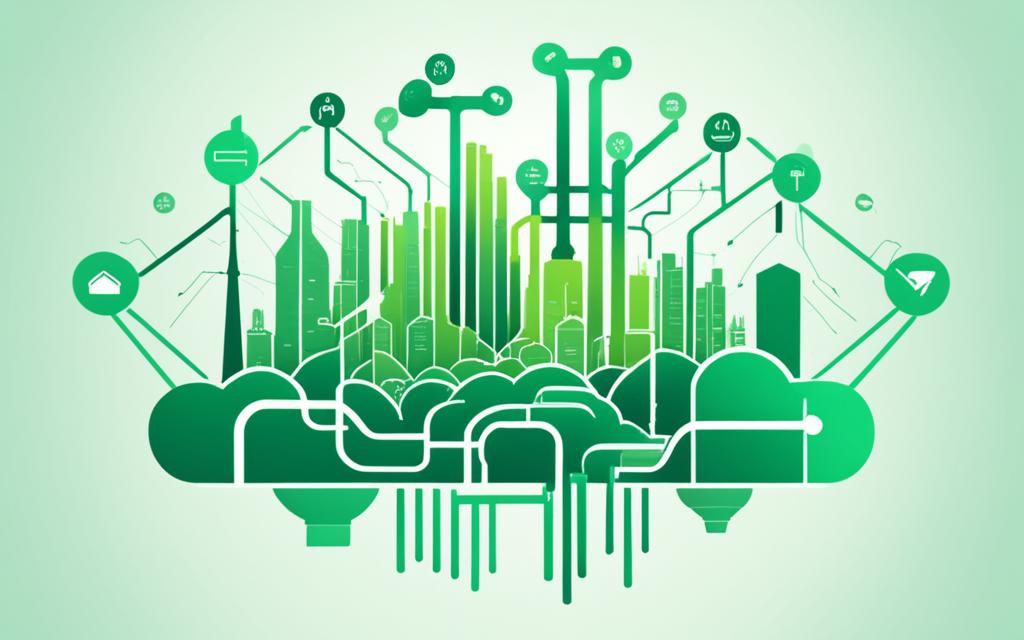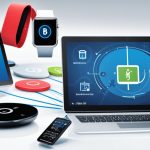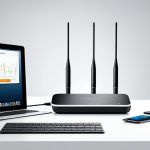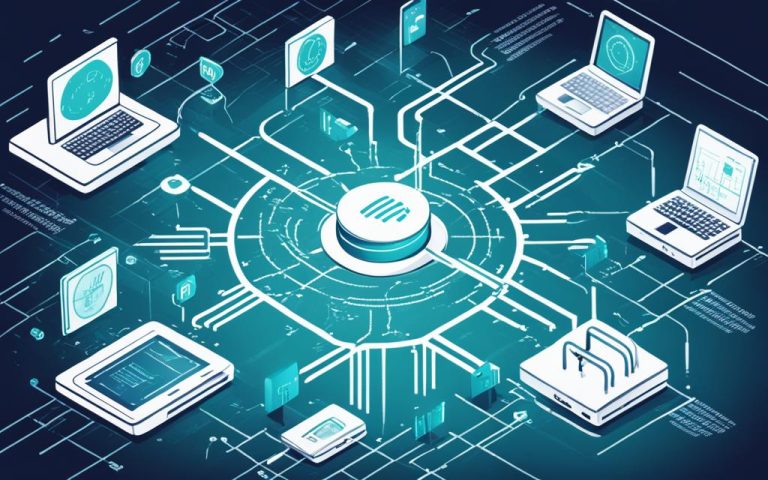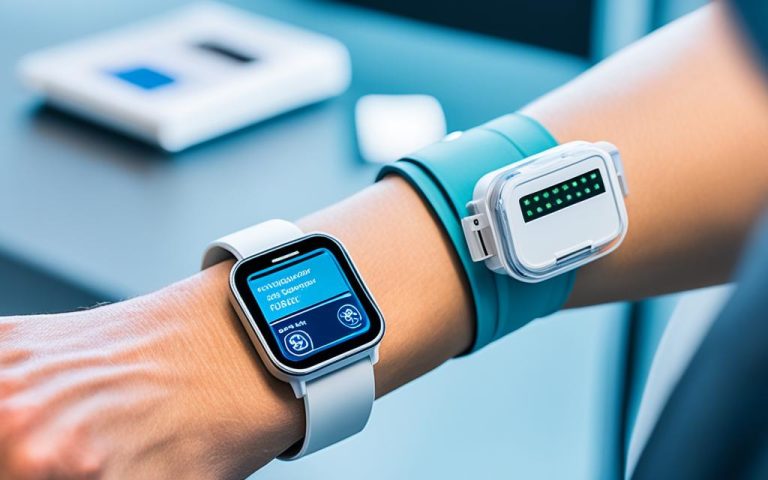Personal Area Networks (PANs) are an integral part of our daily lives, connecting our devices and facilitating seamless communication. However, PANs can consume a significant amount of energy, contributing to environmental impact and increasing costs. To address this pressing issue, it is crucial to promote energy efficiency in PANs. By implementing strategies and optimizing network infrastructure, we can create greener and more sustainable PANs without compromising performance or reliability.
Assessing the Current State of Your Network
The first step in promoting energy efficiency in PANs is to assess the current state of your network. By evaluating key factors such as energy consumption, carbon footprint, and network design, you can identify areas for improvement and implement targeted strategies for energy efficiency.
Measuring Energy Consumption
Begin by measuring the energy consumption of your network. This can be achieved using tools such as network analyzers and power meters. By analyzing the energy usage of individual devices, as well as the network as a whole, you can pinpoint energy-hungry components and identify opportunities for optimization. Regular monitoring of energy consumption ensures ongoing visibility and helps track the effectiveness of energy-saving measures over time.
Evaluating Carbon Footprint
Assessing the carbon footprint of your network goes hand in hand with energy consumption measurement. By quantifying the greenhouse gas emissions associated with network operations, you gain insights into the environmental impact of your network infrastructure. This assessment can be performed using carbon calculators that take into account factors such as electricity source, power consumption, and the operational lifespan of your equipment. Calculating the carbon footprint allows you to set goals for reduction and carbon neutrality while tracking progress towards sustainability targets.
Examining Network Design
An essential aspect of assessing your network’s energy efficiency is evaluating its design. Consider factors such as network architecture, topologies, and equipment placement. Are there any areas where network equipment is underutilized or where bottlenecks occur? Identifying design flaws and inefficiencies can lead to reconfigurations that optimize energy usage, improve network performance, and reduce energy waste. Regular audits and surveys can provide valuable insights into network design, configuration, and usage patterns.
By collecting and analyzing data related to energy consumption, carbon footprint, and network design, you can gain a comprehensive understanding of your network’s current state. This information serves as a roadmap for implementing targeted energy efficiency measures and prioritizing actions that will have the most significant impact on reducing energy consumption and minimizing your network’s carbon footprint.
Upgrading Equipment for Energy Efficiency
In order to make your Personal Area Network (PAN) more energy efficient, one of the key steps is to upgrade your equipment. Older and outdated equipment tends to consume more power and generate more heat, leading to unnecessary energy waste. By upgrading to newer and greener models, you can take advantage of energy-saving features that promote efficiency and reduce environmental impact.
When considering equipment upgrades, look for devices that offer energy-saving features such as:
- Low-power modes: Devices with low-power modes can automatically reduce their power consumption when not in use, resulting in significant energy savings.
- Sleep modes: Sleep modes allow devices to enter a low-power state when they are inactive for a certain period of time, conserving energy while still being readily available when needed.
- Power management: Equipment with advanced power management capabilities enables you to monitor and control power consumption, optimizing performance while minimizing energy usage.
- Smart cooling: Upgraded devices often incorporate intelligent cooling mechanisms that adjust fan speeds or cooling levels based on real-time temperature data, improving energy efficiency and reducing noise.
Furthermore, it is important to select equipment that holds environmental certifications such as Energy Star, EPEAT, or RoHS. These certifications indicate that the devices meet specific energy efficiency standards and comply with regulations regarding hazardous substances. By choosing equipment with these certifications, you can ensure that your PAN contributes to sustainability and a healthier environment.
| Energy-saving Features | Benefits |
|---|---|
| Low-power modes | Significant energy savings when devices are not in use |
| Sleep modes | Reduces power consumption during inactive periods without compromising availability |
| Power management | Optimizes performance while minimizing energy usage |
| Smart cooling | Improves energy efficiency and reduces noise by adjusting cooling based on temperature |
Optimizing Configuration and Settings
When it comes to achieving energy efficiency in Personal Area Networks (PANs), optimizing network configuration and settings plays a crucial role. By implementing various techniques and protocols, you can significantly reduce energy consumption while maintaining network performance and reliability.
Network Segmentation
One effective technique for optimizing PANs is network segmentation. By dividing the network into smaller, logically separate units, you can increase security, improve network performance, and minimize energy wastage. Through traffic isolation and better management of resources, network segmentation allows for more efficient utilization of bandwidth and reduces the need for excessive data transmission.
Traffic Shaping
Traffic shaping is another strategy that helps in energy optimization. By prioritizing network traffic and allocating bandwidth based on specific requirements, you can reduce bottlenecks and improve overall network efficiency. This enables more effective use of network resources and helps prevent energy waste due to unnecessary data transmission.
Load Balancing
Load balancing is a technique used to distribute network workload evenly across devices, ensuring optimal utilization and preventing overburdening of any single component. By balancing traffic across multiple devices, load balancing reduces energy consumption by preventing devices from operating at maximum capacity for an extended period. This technique improves network performance and extends the lifespan of individual devices, therefore reducing the overall energy footprint of the PAN.
Compression
Compressing data before transmission is yet another method to optimize energy efficiency in PANs. By reducing the size of data packets, compression minimizes the amount of network bandwidth required, thereby lowering energy consumption. Additionally, compressed data has a shorter transmission duration, leading to reduced energy usage and improved network responsiveness.
Implementing Energy-efficient Protocols
Implementing energy-efficient protocols is crucial for maximizing energy efficiency in PANs. Popular protocols like IEEE 802.3az (Energy Efficient Ethernet), IEEE 802.11n (Wireless LAN), and IPv6 (Internet Protocol version 6) offer significant energy-saving capabilities. Energy Efficient Ethernet, for example, adjusts the power consumption of network devices based on their utilization, resulting in substantial energy savings over time. Similarly, Wireless LAN and IPv6 protocols optimize network operations for wireless communication and improve energy efficiency.
To visualize the impact of optimizing configuration and settings on energy efficiency in PANs, let’s take a look at the following table:
| Technique | Benefits |
|---|---|
| Network Segmentation | Enhanced security, improved network performance, reduced energy wastage |
| Traffic Shaping | Optimal bandwidth allocation, minimized bottlenecks, reduced energy waste |
| Load Balancing | Even workload distribution, improved device lifespan, lower energy consumption |
| Compression | Reduced data packet size, lower bandwidth requirements, improved network responsiveness |
| Energy-efficient Protocols | Significant energy savings, optimized wireless communication, improved energy efficiency |
Consolidating Resources for Efficiency
Consolidating resources is a key strategy to enhance energy efficiency in Personal Area Networks (PANs). By leveraging virtualization, cloud computing, and network automation, organizations can significantly reduce their environmental impact while improving operational efficiency.
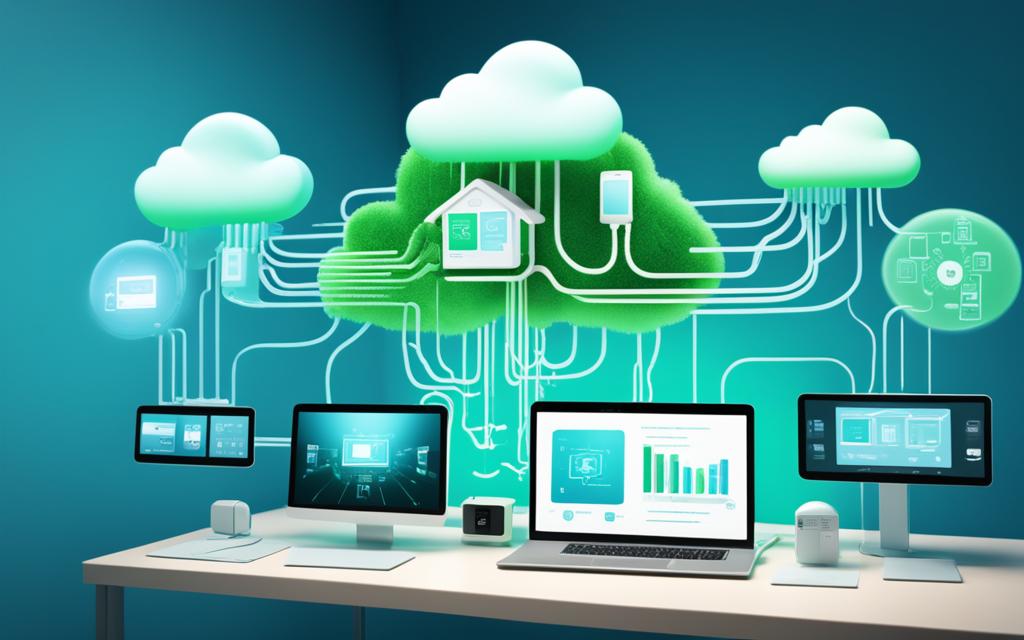
Virtualization allows for the reduction of physical servers and devices by sharing resources among multiple users and functions. This consolidation leads to space savings, reduced power consumption, lower cooling requirements, and decreased maintenance costs. Additionally, virtualization improves scalability and flexibility, enabling efficient resource allocation based on demand.
Cloud computing takes the concept of resource consolidation a step further. By migrating network services and applications to the cloud, companies can leverage shared infrastructure, reducing the need for on-premises hardware. This not only minimizes energy consumption but also eliminates the need for physical space, making it an ideal solution for organizations with limited resources.
Network automation and orchestration are vital components of resource consolidation. By automating repetitive tasks and streamlining management processes, organizations can minimize human errors and reduce network downtime. Additionally, network automation enhances energy efficiency by dynamically adjusting resource allocation based on demand, thereby optimizing power consumption.
By embracing virtualization, cloud computing, and network automation, organizations can achieve significant energy savings, reduce their carbon footprint, and improve their overall sustainability. With the added benefits of scalability, flexibility, and streamlined operations, resource consolidation is a strategic approach to ensure the efficient and responsible management of PANs.
Implementing Green Policies and Practices
Implementing green policies and practices is a crucial step towards promoting energy efficiency in Personal Area Networks (PANs). By adopting environmentally responsible network usage and utilizing renewable energy credits, businesses can make a significant impact on sustainability while reducing costs.
Educating Users and Staff for Responsible Network Usage
One of the key elements of implementing green policies is educating users and staff about efficient network resource utilization. By promoting responsible network usage, such as turning off unused devices and utilizing wireless technologies, businesses can significantly reduce their energy consumption.
“Efficient network resource utilization is not only environmentally responsible but also contributes to cost savings for businesses.”
Setting Targets and Monitoring Progress
Setting goals and targets for energy consumption reduction and carbon emissions are essential for driving sustainable network usage. By monitoring and reporting progress regularly, businesses can track the effectiveness of their green policies and identify areas for improvement.
Participating in Green Power Programs and Markets
Engaging in green power programs or markets allows businesses to trade renewable energy credits and certificates. By supporting renewable energy sources, such as wind or solar power, businesses can contribute to a greener energy mix and further promote sustainability in PANs.
Example of a Green Policies and Practices Table:
| Green Policies | Description | Benefits |
|---|---|---|
| Energy Consumption Reduction Targets | Setting specific targets for reducing energy consumption in PANs | – Lower operational costs – Reduced carbon emissions |
| Staff Training and Education | Educating users and staff about responsible network resource utilization | – Increased awareness of energy-saving practices – Enhanced network efficiency |
| Renewable Energy Credit Participation | Engaging in green power programs or markets, trading renewable energy credits and certificates | – Support for renewable energy sources – Contribution to a greener energy mix |
By implementing green policies and practices, businesses can not only achieve energy efficiency in their PANs but also contribute to a more sustainable future.
Exploring Renewable Energy Solutions
To achieve significant energy efficiency in Personal Area Networks (PANs), exploring renewable energy sources is crucial. By harnessing the power of renewable energy, such as solar power, wind energy, hydropower, or biomass, PANs can reduce their reliance on the conventional power grid and lower carbon emissions.
One of the key renewable energy sources for PANs is solar power. Solar panels or photovoltaic systems can be installed on rooftops or in open spaces to capture sunlight and convert it into clean electricity. This solar power can be utilized to directly supply energy to network devices and servers, reducing the overall environmental impact.
In addition to solar power, other renewable energy sources like wind energy, hydro, and biomass can also be tapped into. Wind turbines can be installed in locations with strong winds to generate electricity that powers PANs. Similarly, hydropower utilizes the kinetic energy of flowing water to produce clean electricity. Biomass energy, generated from organic materials like plant residues and agricultural waste, can be converted into heat or electricity for PANs.
Renewable energy sources such as solar power, wind energy, hydro, and biomass play a crucial role in reducing environmental impact and promoting sustainability in PANs.
In addition to generating renewable energy, battery energy storage systems can capture and store excess energy for backup or emergency power in PANs. Batteries act as reservoirs of energy, ensuring a continuous power supply even in the event of grid outages or fluctuations. Fuel cells and flywheel energy storage systems are other alternatives that can provide reliable backup power.
By embracing renewable energy sources and implementing effective energy storage solutions, PANs can increase their resilience and minimize the risk of downtime.
To further support the adoption of renewable energy in PANs, participating in renewable energy markets and programs can be beneficial. These initiatives not only encourage the use of renewable energy sources but also facilitate the transition to a greener energy mix. By purchasing renewable energy credits or certificates, PANs can show their commitment to sustainability and contribute to a cleaner, more sustainable future.
Overall, exploring renewable energy solutions is an essential step toward achieving energy efficiency in PANs. By utilizing solar power, wind energy, hydro, biomass, and implementing battery energy storage, PANs can significantly reduce their carbon footprint and contribute to a more sustainable network infrastructure.
Conclusion
Promoting energy efficiency in Personal Area Networks (PANs) is a vital step towards a more sustainable future. By implementing various strategies such as assessing network efficiency, upgrading equipment, optimizing configuration, consolidating resources, implementing green policies, and exploring renewable energy solutions, we can create greener and more efficient PANs. Not only does embracing energy-efficient practices reduce the carbon footprint, but it also lowers operational costs.
The assessment of network efficiency helps identify areas of improvement and prioritize actions to enhance energy efficiency. Upgrading equipment to newer models with energy-saving features and environmental certifications ensures a greener PAN. Optimizing network configuration and settings through techniques like traffic segmentation and energy-efficient protocols further reduces energy consumption.
Consolidating resources through virtualization, cloud computing, and network automation minimizes the physical infrastructure while enhancing scalability and flexibility. Implementing green policies and practices, along with responsible network usage, helps drive sustainable behavior among users and staff. Exploring renewable energy solutions, such as solar power and battery energy storage, allows for a cleaner energy mix and improved network resilience.
By integrating these energy-efficient strategies, PANs can play a significant role in promoting sustainability and reducing environmental impact. Not only does this benefit the environment, but it also leads to long-term cost savings and a more efficient network infrastructure. As we strive for a greener future, embracing energy efficiency in PANs is essential for a more sustainable and resilient network ecosystem.
FAQ
How can I promote energy efficiency in my Personal Area Network (PAN)?
To promote energy efficiency in your PAN, you can start by assessing the current state of your network. This involves measuring energy consumption, carbon footprint, and environmental conditions. Upgrading your equipment to newer and greener models, optimizing network configuration and settings, consolidating resources, implementing green policies and practices, and exploring renewable energy solutions are also effective strategies to make your PAN more energy efficient.
What tools can I use to assess the energy consumption of my PAN?
To assess the energy consumption of your PAN, you can use tools like network analyzers, power meters, and environmental sensors. These tools help measure the energy usage, carbon footprint, and environmental conditions of your network. Conducting audits and surveys can also provide valuable insights into the network design, configuration, and usage patterns.
How can upgrading my equipment improve energy efficiency in my PAN?
Upgrading your equipment to newer and greener models is a crucial step in making your PAN more energy efficient. Older and outdated equipment tends to consume more power and generate more heat. By upgrading, you can take advantage of energy-saving features such as low-power modes, sleep modes, power management, and smart cooling. Look for equipment with environmental certifications like Energy Star, EPEAT, or RoHS, which indicate higher energy efficiency and reduced hazardous substances.
What are some techniques to optimize network configuration and settings for energy efficiency?
Optimizing network configuration and settings is essential for energy efficiency in PANs. Techniques like network segmentation, load balancing, traffic shaping, and compression help distribute workload and bandwidth among devices, eliminating redundancy and reducing energy consumption. Implementing energy-efficient protocols like IEEE 802.3az (Energy Efficient Ethernet), IEEE 802.11n (Wireless LAN), and IPv6 (Internet Protocol version 6) also contribute to reducing energy usage.
How does consolidating resources enhance energy efficiency in PANs?
Consolidating resources is a key strategy to enhance energy efficiency in PANs. Virtualization and cloud computing enable the sharing of resources among multiple users and functions, reducing the need for physical servers and devices. This consolidation saves space, power, cooling, and maintenance costs while improving scalability and flexibility. Network automation and orchestration further streamline management and operations, minimizing human errors and downtime.
What are some green policies and practices that can be implemented to promote energy efficiency in PANs?
Implementing green policies and practices is vital for promoting energy efficiency in PANs. Setting goals and targets for reducing energy consumption and carbon emissions, along with monitoring and reporting progress, helps drive responsible and sustainable network usage. Educating users and staff about efficient network resource utilization and adopting green habits, such as turning off unused devices or using wireless technologies, further contributes to energy savings. Additionally, participating in green power programs or markets allows the trading of renewable energy credits and certificates.
How can exploring renewable energy solutions contribute to energy efficiency in PANs?
To achieve significant energy efficiency in PANs, exploring renewable energy sources is crucial. Utilizing solar, wind, hydro, or biomass energy to generate clean electricity for network devices and servers can reduce reliance on the grid and lower carbon emissions. Battery, fuel cell, or flywheel energy storage systems can capture and store excess energy for backup or emergency power, increasing network resilience. Engaging in renewable energy markets and programs can also support the transition to a greener energy mix.
Why is promoting energy efficiency in PANs important?
Promoting energy efficiency in PANs is not only environmentally responsible but also economically beneficial. By assessing network efficiency, upgrading equipment, optimizing configuration, consolidating resources, implementing green policies, and exploring renewable energy solutions, we can create greener and more sustainable PANs. Embracing energy-efficient practices not only reduces the carbon footprint but also lowers operational costs, ensuring a more sustainable future for network infrastructure.

